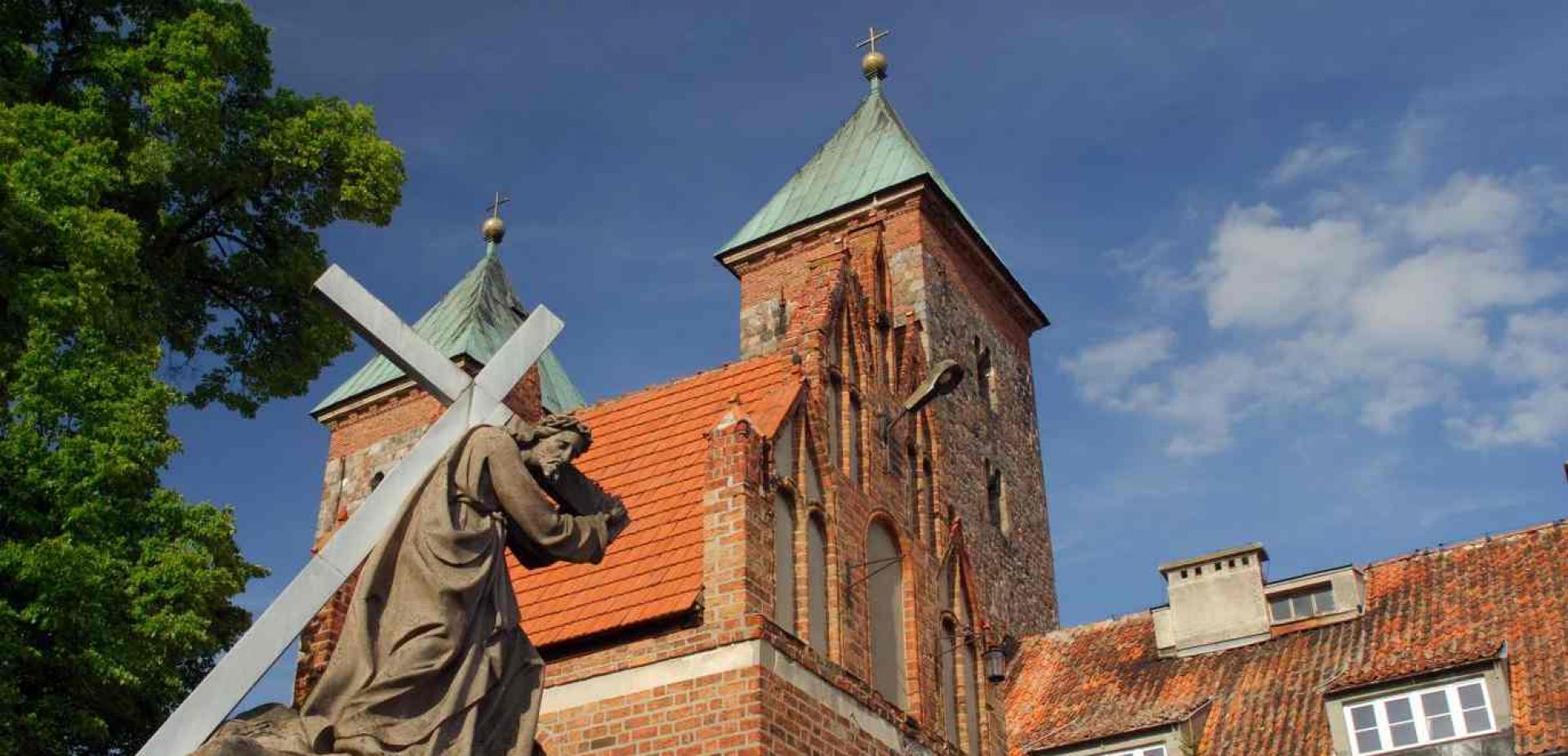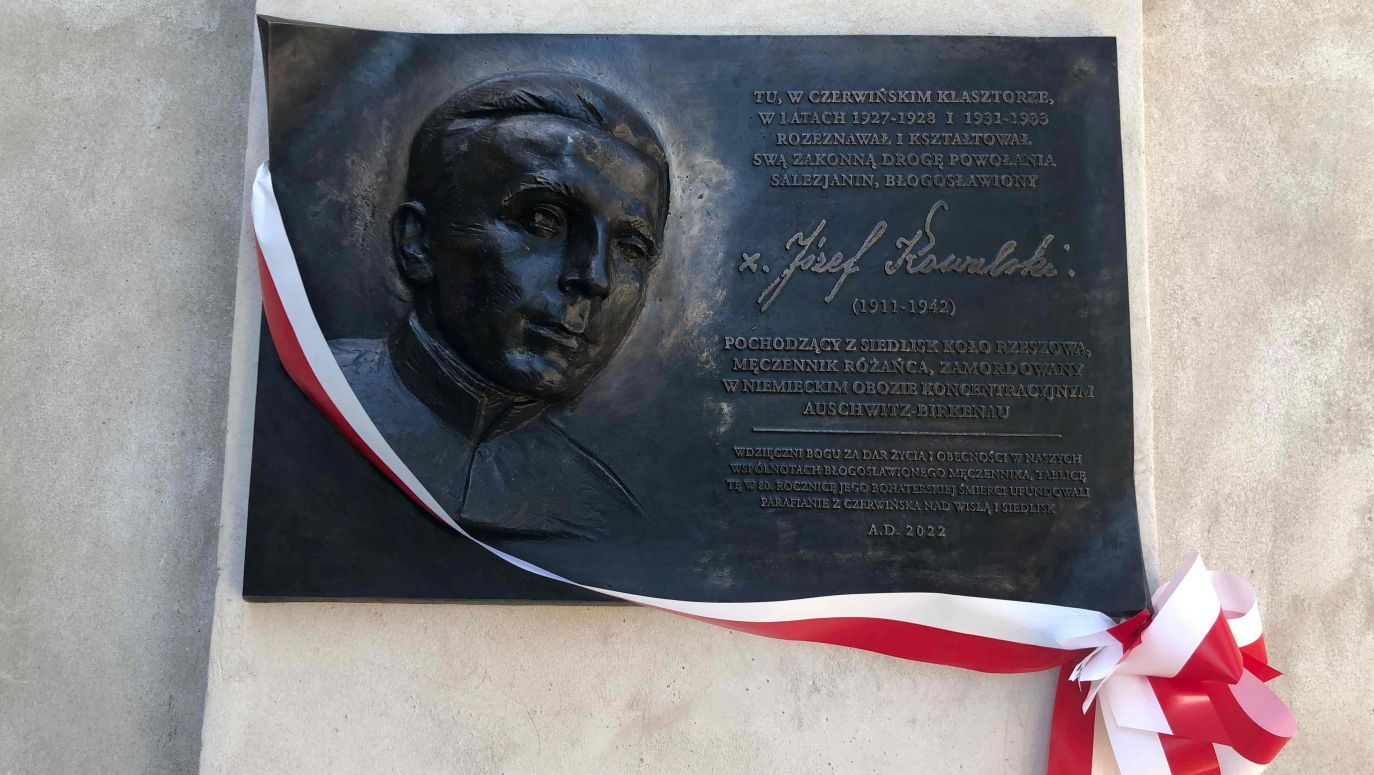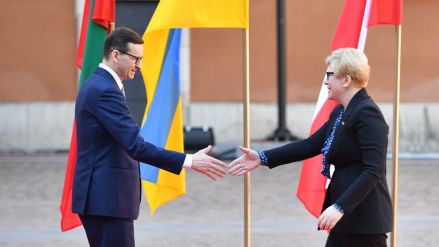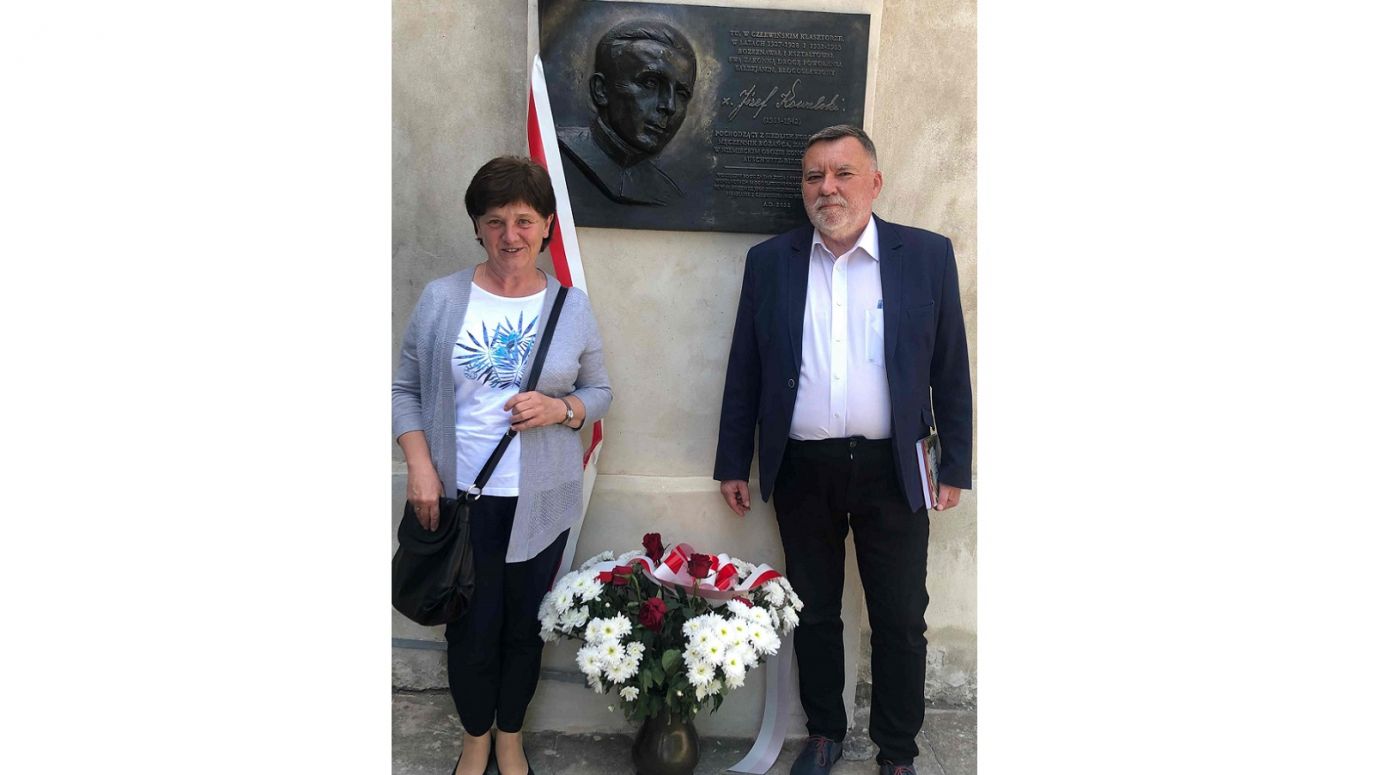The residents of the southern Sub-Carpathian village of Siedlisko, together with those of the small Mazovian town of Czerwińsk, by the river Vistula, commemorated Father Józef Kowalski, the priest brutally murdered eighty years ago in Auschwitz concentration camp. They had undertaken to fund the memorial plaque themselves without official support or financial help from the Institute of National Remembrance, a major national research institution.
Józef Kowalski was born in Siedlisko and underwent his noviciate in the Salesian community in Czerwińsk. He was beatified in 1999 among 108 fellow martyrs from the Second World War. He was just thirty one years old when he died. His memory, and that of his death at the hands of the Germans is still kept alive in his native locality where his close relatives and wider family members still live.
 SIGN UP TO OUR PAGE
SIGN UP TO OUR PAGE 
Jaromir Kwiatkowski, journalist and author from the city of Rzeszów, in the Sub-Carpathian region and the motive force behind the plaque, said “He is a remarkable character an example of a life that was lived intensively and to the full. He had a clear life aim and serves as a wonderful example of a patriotic and priestly life in the face of death. Kwiatkowski authored the biography of Father Józef Kowalski a few years ago, but his knowledge of the priest started in 1999 when he wrote his first article during the occasion of his beatification.
“If we don’t take care of the memory of the victims of the Second World War, ”he said” the succeeding generation may well forget what it is all about. And each one of the 108 martyrs is worthy of remembrance.”
Salesian Education
Father Józef was the first Salesian to be beatified. During his research, he author of the book “Miał być i jest świętym” [He was to be and is a Saint] came to the Salesian community that had been based in Czerwińśk since before the war. Father Józef studied Latin and Greek, the liturgy, music and singing.
Professor Jan Żaryn, parliamentary senator, said in his address before the unveiling “The Salesians performed distinguished service to Polish education during the 1920s and 30s.” He continued “In the educational establishments throughout Poland, boys from poor families, unable to afford an schooling were taught. In addition far from their homes. There were real rough diamonds that were discovered such as Father Józef Kowalski from a Rzeszów village. Also there was Father August Hlond (1881-1948) from a Silesian family, later a cardinal and Primate of Poland. There was Archbishop Antoni Baraniak, his secretary who refused to inform on Cardinal Stefan Wyszyński during maltreatment in a Stalinist jail. But members of poorer families were not the only ones educated by the Salesians. Prince Adam Czartoryski befriended Father John Bosco, the founder of the Salesian order. He was the grandson of Adam Czartoryski of “Hotel Lambert” fame a Polish émigré centre in Paris in the 19th century and an heir to a great patriotic tradition. It became a crucible of Polishness that was, together with his wealth, donated to the order. A beneficiary of this legacy was Father Józef Kowalski,” Professor Żaryn concluded in his address.
“Józef Kowalski grew up in such a Salesian tradition. Were it not for the war, he would have been included in the ranks of those who built Poland with their knowledge, talent, work and other qualities that the Germans sought to extirpate quickly. This is the reason why they systematically liquidated the Polish clergy.” Professor Żaryn continued. He reminded his audience that the Germans classified the Polish clergy as a “collective enemy”.
In the Dachau concentration camp alone, 761 Polish clergy of all faiths died. All in all, 2,800 clergy perished throughout the course of the war.

 SIGN UP TO OUR PAGE
SIGN UP TO OUR PAGE 







